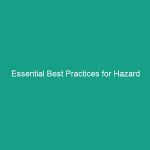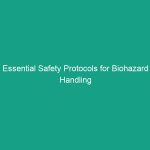Introduction: Understanding the Importance of Auditory Exclusivity
Good morning team,
Today, we’re diving into a crucial topic: auditory exclusivity and its hidden dangers. This concept is vital for our Safety as it directly impacts how we communicate and respond in our work Environment.
With the increasing reliance on auditory signals in many workplaces, understanding these risks and how to manage them is essential for both our Safety and productivity. Let’s explore why this topic matters and how we can apply this knowledge effectively.
Understanding Auditory Exclusivity
Auditory exclusivity refers to the phenomenon where certain sounds or auditory signals dominate our attention, potentially leading to the neglect of critical auditory information in our environment. In workplaces, this can manifest in various ways, such as when workers focus on one sound—like machinery or alarms—while ignoring others that may indicate danger.
This phenomenon is particularly crucial in high-risk industries where auditory cues are necessary for safety. Understanding auditory exclusivity helps us recognize that while some sounds demand our attention, others may signal Hazards we cannot afford to overlook.
Common misconceptions include the belief that we can multitask effectively with sounds or that hearing loss is solely an aging issue. In reality, auditory exclusivity can affect anyone, regardless of age or experience.
Key Hazards, Risks, and Safety Considerations
Ignoring auditory exclusivity can lead to significant risks in the workplace. Here are some specific hazards:
- Missed Alarms: When workers are focused on a specific sound, they might not hear alarms indicating emergencies.
- Communication Barriers: Essential instructions may be missed or misunderstood if employees cannot hear or prioritize them properly.
- Increased Stress Levels: Constantly filtering out sounds can lead to mental fatigue and increased stress, impacting overall workplace morale.
Real-world consequences of ignoring these safety protocols can be severe, leading to accidents, injuries, or even fatalities. For instance, there have been cases where workers failed to react to emergency alarms due to auditory exclusivity, resulting in dangerous situations.
Best Practices, Procedures, & Actionable Advice
To mitigate the risks associated with auditory exclusivity, here are some Best Practices:
- Awareness Training: Conduct training sessions to help employees recognize auditory exclusivity and its implications.
- Sound Design: Optimize the sound environment by ensuring alarms and signals are distinct and easily identifiable.
- Regular Breaks: Encourage employees to take breaks from noise-heavy environments to reduce auditory fatigue.
For example, consider the case of a factory where a fire alarm went unheard due to the continuous noise from machinery. Post-incident analysis revealed that redesigning the alarm system to include a distinctive sound helped prevent future occurrences.
Regulations, Standards, and Compliance
Compliance with safety Regulations is critical when addressing auditory exclusivity. Relevant Standards include:
- OSHA Regulations: The Occupational Safety and Health Administration mandates that employers ensure a safe workplace, which includes managing noise levels and ensuring effective communication.
- ISO Standards: The International Organization for Standardization provides guidelines on managing Occupational Health and safety risks, including those related to auditory signals.
Understanding and adhering to these regulations not only protects employees but also enhances overall Workplace Safety culture.
Employee Engagement & Discussion
Now that we’ve covered the importance of auditory exclusivity, let’s engage in a discussion. Here are a few questions to consider:
- What safety challenges have you encountered related to auditory exclusivity?
- Can you think of any instances where a sound was missed that could have posed a risk?
- What strategies do you think could further improve our auditory safety practices?
Your insights are valuable as we work together to create a safer workplace for everyone.
Conclusion & Key Takeaways
In conclusion, understanding auditory exclusivity and its hidden dangers is essential for maintaining a safe work environment. By recognizing the risks, following Best Practices, and complying with safety regulations, we can significantly reduce the chances of accidents and enhance our overall safety culture.
Let’s prioritize these practices daily and ensure we’re all aware of our auditory environment. Thank you for your attention and your commitment to safety!


